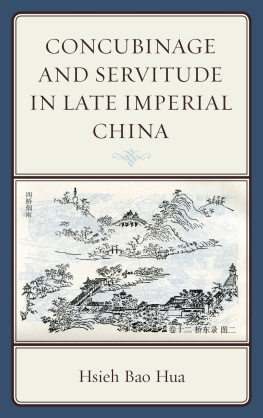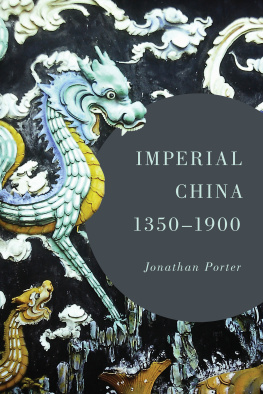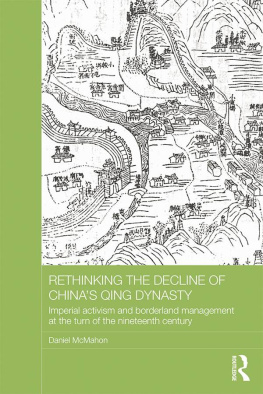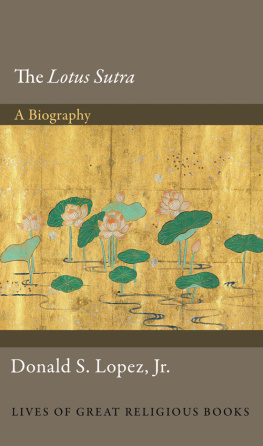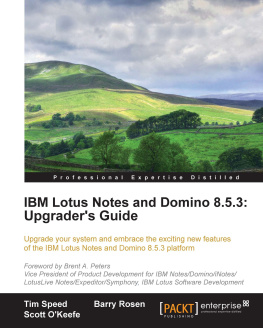THE WHITE LOTUS WAR
REBELLION & SUPPRESSION IN LATE IMPERIAL CHINA
YINGCONG DAI
UNIVERSITY OF WASHINGTON PRESS
Seattle
The White Lotus War was made possible in part by funding from the William Paterson University Foundation.
Copyright 2019 by the University of Washington Press
Printed and bound in the United States of America
Design by Katrina Noble
Composed in Minion, typeface designed by Robert Slimbach
Cover and frontispiece art: Lotus designs in silks, Ming Dynasty, from Chinese Decorative Design
All maps in the book were created from China Historical Geographic Information System, Version 6.0: 1820 (Fairbank Center for Chinese Studies, Harvard University, and the Center for Historical Geographical Studies, Fudan University, 2016).
23 22 21 20 19 5 4 3 2 1
All rights reserved. No part of this publication may be reproduced or transmitted in any form or by any means, electronic or mechanical, including photocopy, recording, or any information storage or retrieval system, without permission in writing from the publisher.
UNIVERSITY OF WASHINGTON PRESS
www.washington.edu/uwpress
LIBRARY OF CONGRESS CATALOGING-IN-PUBLICATION DATA
Names: Dai, Yingcong, author.
Title: The White Lotus War : rebellion and suppression in late imperial China / Yingcong Dai.
Description: Seattle : University of Washington Press, [2019] | Includes bibliographical references and index.
Identifiers: LCCN 2018038894 | ISBN 9780295745459 (hardcover ; alk. paper) | ISBN 9780295745466 (ebook)
Subjects: LCSH : ChinaHistoryWhite Lotus Rebellion, 1796-1804. | ChinaHistoryJiaqing, 1796-1820.
Classification: LCC DS756.33 .D35 2019 | DDC 951/.033dc23
LC record available at https://lccn.loc.gov/2018038894
The paper used in this publication is acid free and meets the minimum requirements of American National Standard for Information SciencesPermanence of Paper for Printed Library Materials, ANSI Z39.481984 .
CONTENTS
MAPS
The White Lotus War, 17961804
Spread of the Hunyuan and Shouyuan Sects in Central China
Uprisings in Hubei in 1796
Locations of Uprisings in Sichuan and Shaanxi, 17961797
The Xiangyang Rebels Long March to Sichuan
Sites of Major Battles in Northeastern Sichuan in Late 1797
The Demise of the Yao-Wang Force, 17971798
The Battle for Western Sichuan
Nayancheng in the War in 1800
The War in Late 1800
The War in 1801
The War in 1802
The Last Battles, 18031805
The Three Mutinies
ACKNOWLEDGMENTS
At the heart of this study are the records from the nearly decadelong White Lotus War. Navigating the maze of war-front corruption, I feel particularly indebted to two Qing officials, Kuilun and Guwanghing. In many a memorial they wrote during a brief and aborted reform, they exposed, with candor and in detail, pervasive abuses and embezzlement of war funds, which had previously been a rarity in official correspondence of the Qing dynasty. As one of the first users of the digitized Qing archives, I would like to express my gratitude to those in the National Palace Museum and the Academia Sinica, Taiwan, who have endeavored to make large sections of the Qing archives accessible online. I am grateful to the editors and publishers of several compendia of the archives from the Qianlong and Jiaqing periods, especially the Number One Archives of China in Beijing and the Guangxi Normal University Press in Guilin. Thanks are due to the East Asian Library, Princeton University, and the interlibrary loan services of the David and Lorraine Cheng Library, William Paterson University of New Jersey, for access to materials crucial to the project.
In 2006, I received a travel grant from the Harvard-Yenching library, Harvard University, to use materials on the White Lotus War in that library. In 2009, a grant from the Starr East Asian Foundation supported me for a one-semester membership in the School of Historical Studies of the Institute for Advanced Study, during which time I started drafting this book. In 20082011 and 20132014, I was awarded assigned released time several times by the William Paterson University, which reduced my teaching load so that I could work on the project during those semesters. A one-year sabbatical leave in 20112012 allowed me much desired time to complete two chapters. I am grateful for all the above-mentioned financial support.
Over the years, I have presented material from the book at the Columbia Seminar, the annual conference of the Association for Asian Studies, Bochum University, Harvard University, the Institute for Advanced Study, Washington University at St. Louis, Leiden University, and the University of Washington in Seattle. I am thankful to the organizers, discussants, fellow panelists, and audiences for their feedback and encouragement. I am especially grateful to the late Philip Kuhn, discussant for our panel at the 2007 annual conference of the Association for Asian Studies, for his inspiring and exacting comments.
Looking back, I owe my thanks to Edward McCord, who first suggested a project on the White Lotus War in 2000 when we were waiting for a delayed flight at the airport in Malm, Sweden. Since then, many have provided specific assistance or expressed interest in the study, including R. Kent Guy, William Rowe, Peter Perdue, Joanna Waley-Cohen, Nicola Di Cosmo, Tobie Meyer-Fong, Steven Miles, Daniel McMahon, Blaine Gaustad, Cecily McCaffrey, Lai Hui-min, Zhuang Jifa, Kenneth Swope, Thomas Ninmick, David Robinson, Zhao Ma, James Bonk, Elisabeth Kaske, Ulrich Theobald, Maura Dykstra, and Jeroen Duindam. I thank Merrick Lex Berman for introducing me to the China Historical GIS database on which the maps in the book are based and Michael Scrivana for coaching me in using Adobe Illustrator to edit maps.
Throughout the duration of the project, Susan Naquin has given me unswerving support and sagacious advice. Helen Dunstan read the chapter on war finances and provided many useful comments and suggestions. I also thank the two anonymous readers for their approval of this study and their constructive suggestions. Lorri Hagman, the executive editor of the University of Washington Press, recognized the value of this project when it was still in an early stage and has guided me through the long process of transforming a rough manuscript into a book, for which I am ever so grateful. Finally, I thank my husband, Ming, for his continuous support in many ways, including accompanying me, on extremely hot summer days, to visit sites of the conflict in northeastern Sichuan.
A NOTE ON DATES AND TERMINOLOGY
Years in this book appear according to both the Gregorian calendar and the Chinese lunar calendar. Specific dates (year/month/day), however, appear only according to the Chinese lunar calendar. Hence, 01/03/09 stands for the ninth day of the third month of the first year of the Jiaqing reign. The New Year in the book represents the Chinese Lunar New Year. Intercalary months occurred in three different years during the White Lotus War: 1797, 1800, and 1803. Those intercalary months are indicated by inter before the month; for example, inter06 means the second sixth month, which followed the regular sixth month.
Some Manchu and Mongol personal names are transliterated based on the original Manchu or Mongolian names, if they are known to the author: for example, Eldemboo (Manchu) and Cangling (Mongolian). For these, Chinese transliterations are given in the glossary as well. Some Manchu personal names that are better known in Chinese among Qing historians, such as Mingliang and Lebao, appear throughout in Chinese transliteration. In the glossary, their Manchu names appear in parentheses: for example, Mingliang (M: Mingliyang).


